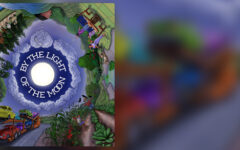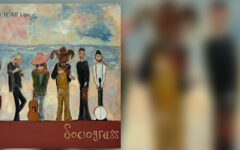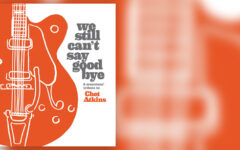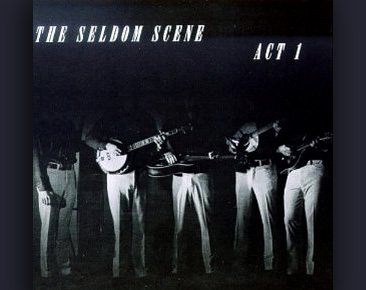
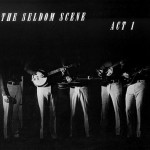 Before we rang in the new year, the bluegrass community received some sad news. Dobro innovator, Mike Auldridge, lost his battle with cancer on December 29. Auldridge transformed the resophonic guitar. He took a rousing, unsophisticated, “good time” instrument, and made it intimate, classy, and beautiful. His work is a defining moment in the history of the resonator guitar.
Before we rang in the new year, the bluegrass community received some sad news. Dobro innovator, Mike Auldridge, lost his battle with cancer on December 29. Auldridge transformed the resophonic guitar. He took a rousing, unsophisticated, “good time” instrument, and made it intimate, classy, and beautiful. His work is a defining moment in the history of the resonator guitar.
For younger bluegrass fans, such as myself, Auldridge’s innovations have been taken for granted. Since nearly all dobro players afterwards have done their best to follow Auldridge or his contemporaries (such as Jerry Douglas or Rob Ickes), his revolutionary approach to the instrument has become the new normal, a testament to Mike’s lasting impact.
Roughly forty years ago, Auldridge joined forces with John Starling, Ben Eldridge, Tom Gray, and John Duffey to form The Seldom Scene. Auldridge’s progressive dobro is just one rule which The Seldom Scene bent in their interpretation of bluegrass. Seldom Scene’s Act I was released in 1972, and bluegrass has never been the same.
Just by looking at the track list for Act I, you can tell this is not your average bluegrass album, particularly for the seventies. Dave Freeman of Rebel Records note, “Although the band was known right from the start for its smooth, sophisticated renditions of songs from non-rural sources, the Scene satisfied hardcore fans and gained instant respect among new converts for the classics they cherished and performed often.”
At a glance, certain traditional bluegrass songs such as Darling Corey, With Body and Soul, and Summertime Is Past and Gone stand out, but after a second look, more modern tunes from sources outside of bluegrass appear on this ground-breaking album as well. By performing songs such as Sweet Baby James and City Of New Orleans, The Seldom Scene quickly set themselves apart from other bluegrass acts of the era.
Sweet Baby James, a James Taylor tune, was one of The Seldom Scene’s first big hits. John Starling’s sensitive lead vocals fit Taylor’s signature song perfectly. Starling’s rich tone is similar to that of Taylor’s and John Duffey’s distinctive tenor voice comes in on the chorus, taking the song to the next level.
A real hidden gem on this track on this track is Tom Gray’s bass playing. On the chorus, Gray shows why he is one of bluegrass’ best bassists, walking the neck of his bass with ease. The tone of his bass is a great contrast to Duffey’s tenor, making Sweet Baby James all the more sweet.
Although The Seldom Scene did perform and record many bluegrass standards, they were always played in the band’s own unique way. Darling Corey is one of my favorite examples of this. Where Bill Monroe and other artists traditionally perform this classic folk song in a more up-tempo manner, The Scene slow it down. It begins with Ben Eldridge’s banjo, then adds Duffey’s mandolin, followed by Auldridge’s dobro, leading up to the grand entrance of the vocals. Their arrangement shifts the focus onto the mournfulness of the lyric, with Duffey’s high lonesome, and somewhat haunting lead captivating the listener.
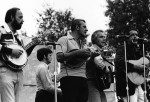 Equally sorrowful is the musicianship of Eldridge and Auldridge. Eldridge’s banjo is the foundation on which the rest of the song is built. His perfectly timed roll acts as another voice in the song. The uniqueness of Auldridge’s dobro playing really shines on this track. Auldridge’s style brings a modern cultivation to a song that’s as old as the hills. As Dave Freeman would suggest, “Mike Auldridge’s sophisticated dobro playing marked the beginning of and the hallmark for contemporary bluegrass as we know it today.”
Equally sorrowful is the musicianship of Eldridge and Auldridge. Eldridge’s banjo is the foundation on which the rest of the song is built. His perfectly timed roll acts as another voice in the song. The uniqueness of Auldridge’s dobro playing really shines on this track. Auldridge’s style brings a modern cultivation to a song that’s as old as the hills. As Dave Freeman would suggest, “Mike Auldridge’s sophisticated dobro playing marked the beginning of and the hallmark for contemporary bluegrass as we know it today.”
One needs to look no further than Auldridge’s arrangement of Cannonball to see how he changed the perception of the resophonic guitar. Before Mike Auldridge hit the scene with The Scene in the early seventies, most people’s exposure to the dobro was from Flatt & Scruggs’ “Uncle Josh” Graves, Auldridge’s hero. It is with The Seldom Scene’s Cannonball that Auldridge bridge’s the gap between the traditional style of Uncle Josh and a transformative style all his own. Auldridge fills the instrumental with very Graves-y breaks, where he is playing with a more bluesy flair, balanced with breaks that are quite original. Auldridge softens the sound a bit, playing lighter, and forcing the listener to sit up and pay attention. His dobro even seems to be weeping a bit, before it rejoins the party. It is this second level to the dobro which Auldridge uncovered, a more sensitive side to the instrument which hadn’t quite been tapped yet, that is what makes Auldridge a true innovator.
The Seldom Scene’s Act 1 appears on Rebel Records (REB-CD-1511). It is available for download at iTunes or Amazon MP3, and can be purchased through County Sales or the Classic Country Connection.

